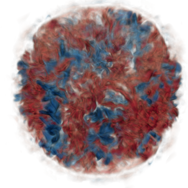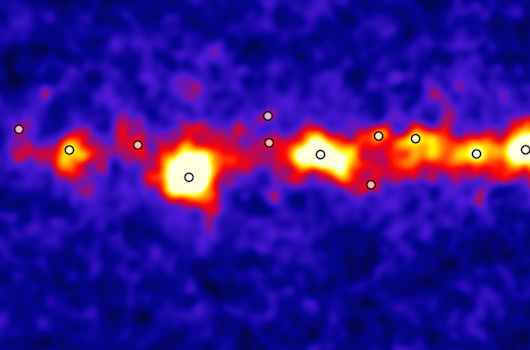Research
Using instruments from the ground-based SOAR telescope to the space-based Chandra X-ray Telescope, Hubble Space Telescope, and James Webb Space Telescope, and some of most powerful computers on the planet, astronomers at Michigan State pursue a broad range of cutting-edge topics.
View our recent (since 2014) astronomy publications on the SAO/NASA Astrophysics Data System.
Stellar and Nuclear Astrophysics
Astronomers at MSU use observations at wavelengths from radio to γ-ray along with theoretical simulations to study neutron stars and black holes in binaries (Brown, Chomiuk, Schatz, Strader, Zepf) and stellar explosions (Brown, Chomiuk, Couch, Kerzendorf). There is a strong focus on nuclear astrophysics at Michigan State: MSU is the lead institution of the Center for Nuclear Astrophysics across Messengers (CeNAM) and the site of the Facility for Rare Isotope Beams; MSU astronomers collaborate extensively with nuclear experimentalists and theorists to study the origin of the elements and the properties of superdense matter, such as that found in neutron stars.
Galaxies and Cosmology
MSU astronomers use facilities such as the Hubble Space Telescope and the Chandra X-ray Observatory to study how the abundance patterns among stars reflect the chemical evolution of the Milky Way, how extragalactic globular clusters traces the history of star formation in other galaxies (Strader, Zepf), and the impact of supernovae and supermassive black holes on the evolution of the brightest galaxies in galaxy clusters (Donahue, O'Shea, Voit). Research into cosmology at MSU includes studies of galaxy clusters that probe how the evolution of the cluster population reflects the properties of dark matter and dark energy (Donahue, Voit, Whitehorn), investigations of the universe's first stars (O'Shea), and studies of the Cosmic Microwave Background (Whitehorn).
Planetary and exoplanetary science

Painting, by Dr. William Hartmann, of a giant impact on an early Earth.
Astronomers at MSU use state-of-the-art observational facilities, such as the James Webb Space Telescope (JWST) and the Transiting Exoplanet Survey Satellite (TESS), along with ground-based photometry and spectroscopy, to discover exoplanetary systems, characterize their atmospheres, and understand the relationship between planets and their host stars (Feinstein, Rodriguez). There is a wide range of theoretical and computation work on planets, moons, asteroids, comets, and interstellar bodies of the Solar System as well as exoplanetary systems. using tools from celestial mechanics, fluid mechanics, geophysics, and geochemistry (Jacobson, Seligman). MSU astronomers actively collaborate with several members of the Department of Earth and Environmental Sciences.
Computational Astrophysics
MSU astronomers use state-of-the-art codes such as Enzo and Flash on machines from local clusters to the Blue Waters supercomputer to simulate diverse phenomena from the birth of the first stars to the fiery death of massive stars. Professors Brown, Couch, O'Shea, and Kerzendorf have joint appointments with the Department of Computational Mathematics, Science, and Engineering, an interdisciplinary department that brings together research in algorithm development, high performance computing, and applications to modeling and data science.

Visualization from a simulation of a massive star just prior to collapse and explosion as a supernova. Credit: S. Couch, MSU.
High-Energy and Particle Astrophysics

Image of the gamma-ray sky, courtesy the HAWC facility.
In addition to the astronomy group, several members of the broader physics community at MSU study particle and neutrino astrophysics: MSU is a member of the High Altitude Water Cherenkov Experiment (Nisa, Tollefson), the IceCube South Pole Neutrino Observatory (DeYoung, Nisa, Whitehorn), the T2K experiment (Mahn), and more broadly Galactic high-energy astrophysics (Zhang).
.jpg)
